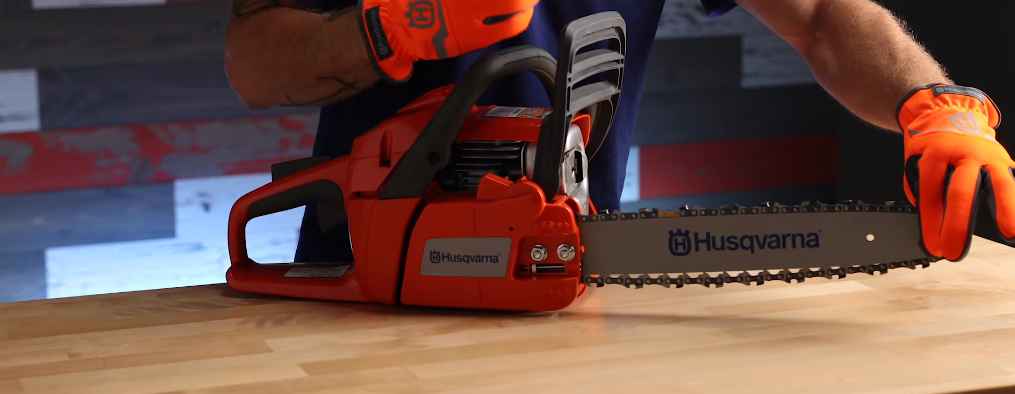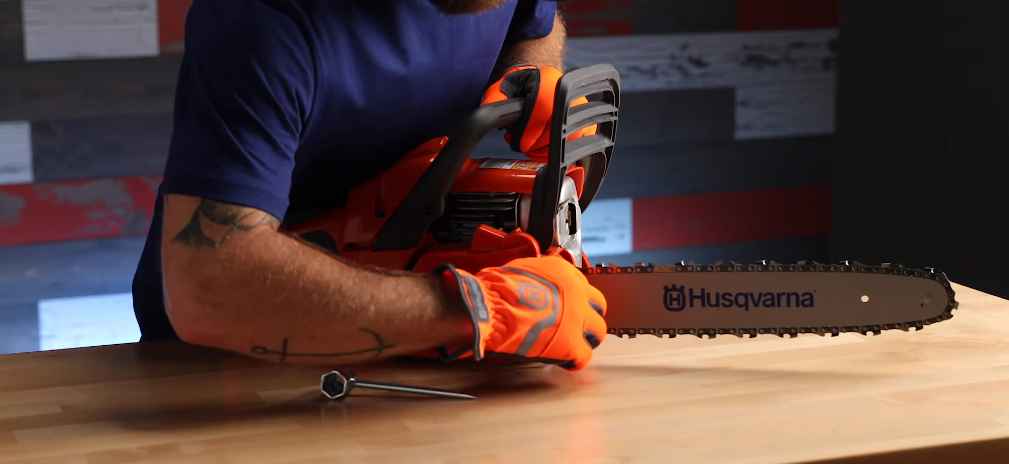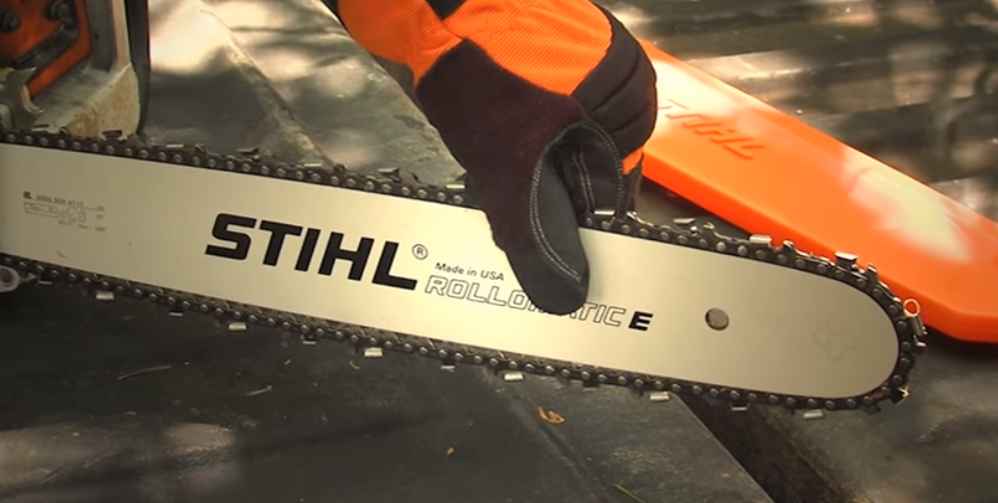Having a functional chainsaw chain is essential to cut through logs, wood, and other materials. However, on many occasions, you’ll have to face the dreaded chainsaw chain loose issue, which decreases the performance of your chainsaw and the whole experience overall.
To prevent that from happening, you better be ready. In this article, we’ll explain the reasons behind a loose chain, which will allow us to learn how to prevent it.

Why Does Chainsaw Chain Keep Coming Loose?
Commonly, three reasons could make the chain come loose.
Incorrect Positioning of the Chain
The most common cause of a chain coming loose is that it wasn’t in the right position.
After tensioning the chainsaw chain, you have to secure the tensioning to prevent any unexpected changes while using the chainsaw.
Some chainsaws have an automatic mechanism to secure or lock the chain in position. In some other cases, the pieces responsible for avoiding the chain from coming loose are a couple of bolts.
If you don’t secure the chain using the tensioning handle or the bolts, it will inevitably come loose.
Temperature Change
When metal interacts with heat, it expands. Even if you’ve set up the chain perfectly, it may come loose due to the change of temperature. This issue happens when the chain is cool and then reaches high temperatures, which makes the chain larger. Thus, it comes loose.
Faulty Tensioning Mechanism
Tensioning the chain is more than making a few adjustments. The sprocket and chainsaw bar interact as you tension the chain. If any of that hardware isn’t working properly, it won’t matter how hard you try. The chain will come loose every time.
How Do You Tighten the Chain on a Chainsaw?

Fortunately for every one of us, long gone are the days when you had to disassemble the whole chainsaw to tension the chain. Nowadays, you only have to follow three simple steps that we’ll mention in this section.
Step 1: Preparation
Start by making sure the power is off, and follow up by pulling the chain brake towards the front handle. It may sound silly, but it’s always better to insist on these simple safety measures than having to regret an accident later on.
Step 2: Tensioning the Chain
Continue the process by loosening the bar nuts. Then, start turning the tensioning screw, which you want to do clockwise. As you’re doing that step, you’ll have to lift the bar by the tip.
Keep tightening the chain tension until it reaches the perfect position.
Step 3: Finishing
After tensioning the chain, now you’ll have to re-tighten the bar nuts. Once you do this step, the chain should be able to turn without binding. You can try turning it using your hand with a glove.
If the chain moves smoothly, then you’ve successfully tensioned it.
How Do You Tell When a Chainsaw Chain Is Worn Out?

You can quickly take notice of a worn out chainsaw chain depending on how good it performs. If you’re having one of the next problems, then that probably means you’ll need to replace the chain as soon as possible.
Lacking Performance
No one ever asks why the chainsaw is such an incredible cutting machine. However, if the cutting becomes crooked or uneven, then that’s something you should be concerned about. It’s a clear sign that the chain’s lifespan is coming to an end.
You could try sharpening the chain, but more often than not, that’s not a permanent solution. Instead, buying a new one would be better.
Harder to Maneuver
A worn out chainsaw chain is difficult to put through materials like wood. What was once a quick process of putting the chainsaw in the right position to cut through, it has now turned into a struggle. When this issue starts happening to you, you’ll know that a chain change is necessary.
Damaged Chain Teeth
Before using the chainsaw, you must check the state of the teeth. If there’s noticeable damage or straight missing teeth, then you should no longer use the chainsaw for your safety. A worn out chain with faulty teeth may cause nasty accidents that you want to avoid.
Smoke
If you notice smoke even after lubricating the chainsaw properly, then that’s a clear sign that the chain isn’t working well anymore. Make sure to sharpen the chain. Try to use any sharpener.
Why Does the Chainsaw Chain Get Dull So Fast?
Many reasons could be the cause of a dull chain. Nonetheless, the most common are three, as we’ll learn next.
Making Contact with Dirt or Rocks
When you’re cutting logs placed on the ground, it’s pretty common that the blade slips through, hitting the dirt below. It’s a regular issue that happens to everyone, which is why you must be careful. Either dirt or rocks are elements that could lead to a dull chain.
Hitting Metals
Sometimes, materials like wood may have metal objects inside. Some of these small items could be nails, staples, and other metal pieces that are quite tough. Again, you want to check what you’re cutting to make sure there are no metals or other inconvenient objects that may hurt the chain.
Lack of Maintenance
Cleaning and oiling the chain properly and regularly is a task every woodworker must do. If you don’t, it won’t take much before the chain starts to rust and loses its quality.
You also want to cover the bar/chain using a scabbard while storing the chainsaw away.
How Long Do Chainsaw Chains Last?

A chainsaw chain will last for more than five years of frequent use, as long as you care for it properly. If you’re an occasional user, then you could expect the chain to last past the decade easily.
If by any chance, the chain starts underperforming, you may have to resharpen it to increase its lifespan a little longer. However, that’s not a definitive solution. Buying a new one may be the better choice.
Conclusion
Now that you know what causes a chainsaw chain to come loose, you’re in a better position to act before the issue occurs. Take the time to maintain your chainsaw properly, and you won’t regret it later.